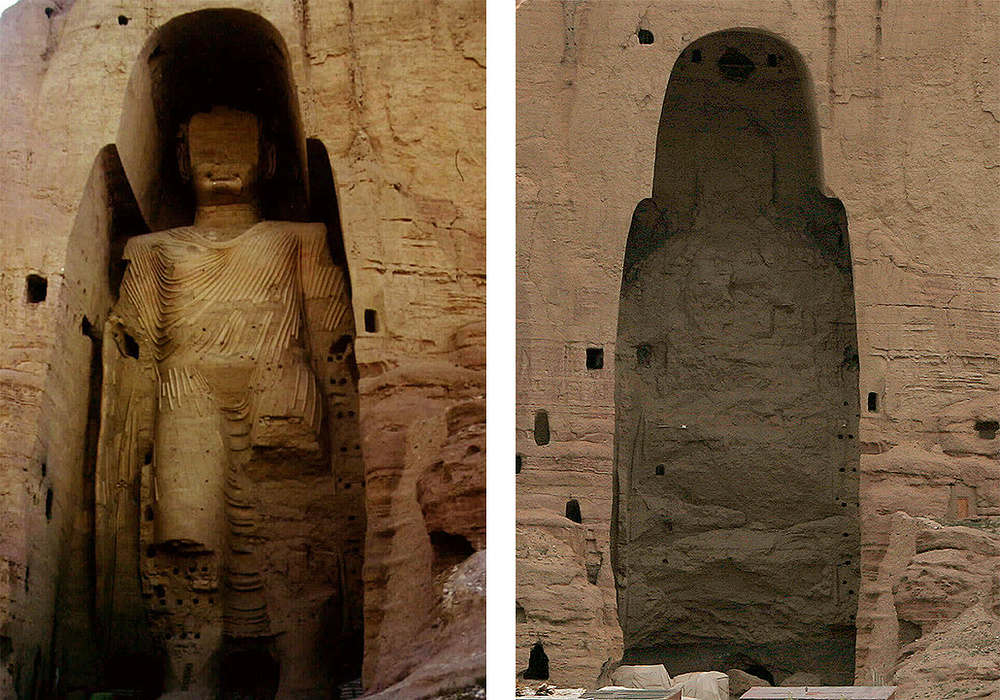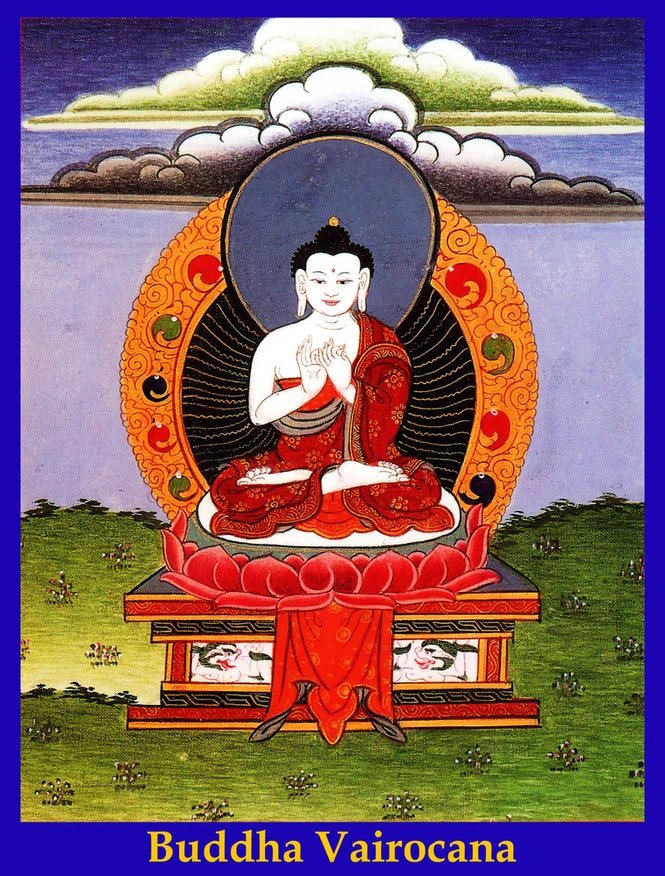Vairocana Buddha is a major iconic figure of Mahayana Buddhism. He is another of the five wisdom Buddhas.
In the Mahavairocana Sutra, Vairocana appears as the universal Buddha from whom all buddhas emanate. He is the source of enlightenment who resides free from causes and conditions.
As Chinese Buddhism developed, Vairocana became especially important to the T’ien-t’ai and Huyan schools. His importance in China is illustrated by the prominence of Vairocana in the Longmen Grottoes, a formation of limestone rock carved into elaborate statues during the Northern Wei and Tang dynasties.
In Tibetan tantra, Vairocana represents a kind of omniscience and omnipresence.
Vairocana is described as the buddha who has no back and front; he is panoramic vision, all-pervading with no centralised notion. So Vairocana is often personified as a meditating figure with four faces, simultaneously perceiving all directions. … The whole symbolism of Vairocana is the decentralised notion of panoramic vision; both centre and fringe are everywhere. It is complete openness of consciousness, transcending the skandha of consciousness.”
– The Tibetan Book of the Dead

Vairocana is associated with the color white — all colors of light blended together — and space, as well as the skandha of form. His symbol is the dharma wheel. He often is depicted with his hands in the dharmachakra mudra. When the Dhyani Buddhas are pictured together in a mandala, Vairocana is in the center. Vairocana also is often depicted larger than other buddhas around him.
*** In 2001, two large standing stone buddhas in Bamiyan, Afghanistan, were destroyed by the Taliban. The larger of the two, nearly 175 feet tall, represented Vairocana, and the smaller one (120 feet) represented Shakyamuni, the historical Buddha.




